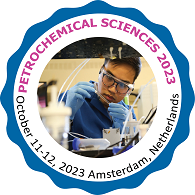Catalysis and pyrolysis are two different processes.
It is a chemistry procedure that entails putting a catalyst into the chemical reaction environment, which accelerates the pace of reaction and hence maximizes production. These chemical reactions only require a minimal amount of catalyst, which speeds up the reaction rate and hence increases product production. In general, the chemical reaction occurs quickly due to the catalyst, which increases the reaction rate, whereas the reaction is slower in a non-catalytic environment. As a result, the catalyst is named catalysis since it plays such an important role in the chemical reaction process.
Pyrolysis is a thermochemical technique that can be applied to any carbon-based organic product. It works with both pure and impure products, as well as mixes. The material is exposed to greater temperatures in this treatment procedure, and in the absence of oxygen, it undergoes chemical and physical separation into various molecules in the industrial facility.
Pyrolysis is a term for a thermal treatment technique. It refers to the processes of combustion and gasification that involve the complete or partial oxidation of a material during heating in the absence of air. As a result, it is primarily a procedure that ensures high energy content in the extracted products.
- Process kinetics and catalysis
- Reaction of pyrolysis
- Methods of gasification
- Engineering with Polymers
- Green catalysis and the environment
- The cracking procedure
- Spectroscopy Catalysis
- Related Associations: International Confederation for Thermal Analysis and Calorimetry | International Council of Chemical Associations | International Society of Chemical Ecology | International Society of Electrochemistry | Federation of Asian Chemical Societies | Society of Chemical Industry.
- Related Companies: Mitsubishi Chemical Holdings | CNPC | Toray Industries | Saudi Basic Industries Corporation | BASF | Lyondell Basell | Eni spA
Related Conference of Catalysis and pyrolysis are two different processes.
Catalysis and pyrolysis are two different processes. Conference Speakers
Recommended Sessions
- Bioprocessing and industrial biotechnology
- Catalysis and pyrolysis are two different processes.
- Chemical processing and biochemical engineering
- Drilling and operation of wells
- Environment-friendly biofuels and bioenergy
- Green Chemistry & Sustainable Energy
- Petro chemistry and petrochemical processes
- Petroleum exploration and oil field management
- Support for both offshore and onshore fields
- Technology and Supply of Gas
- Technology for pipeline transportation
- Upstream, midstream, and downstream integration

